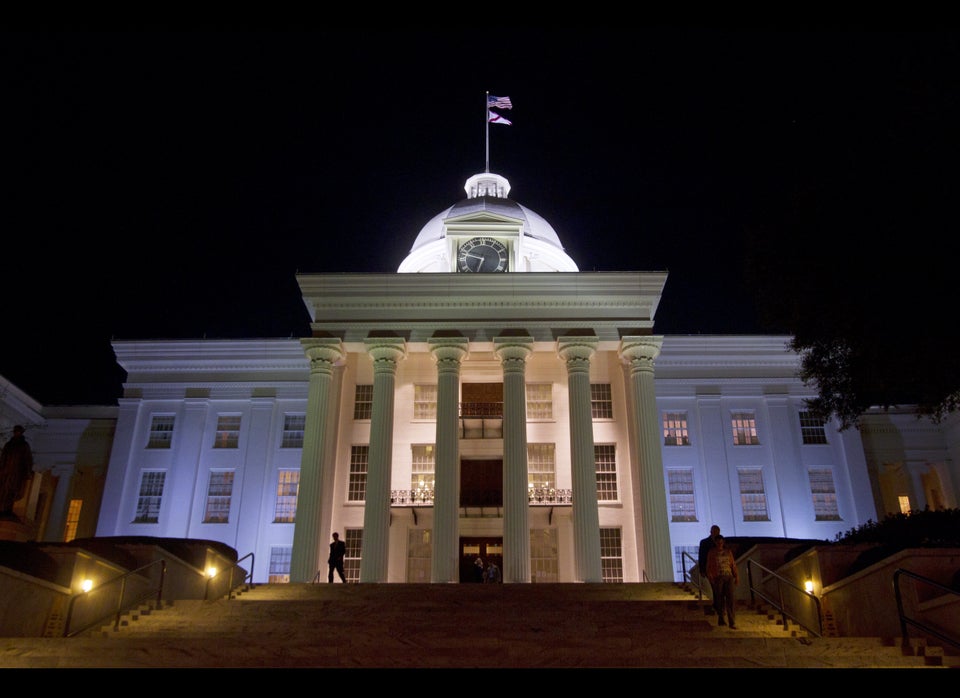
Susan Burton understands the challenges faced by people convicted of drug offenses better than many. A community organizer from Los Angeles who runs homes for women returning from prison and jail, Burton spent years behind bars for six separate charges of drug possession. “An 18-month term, a 2-year term, a 3-year term, a 5-year term, another 2-year term,” she recalls. “Little bits of time over and over and over again.”
Sixteen years ago, Burton entered a substance-abuse treatment program and gained control over her addictions. She now advocates for reforms that would encourage courts to offer more prisoners the option to seek treatment instead of locking them up. But in recent years, as politicians around the country have thrown their weight behind such efforts, Burton and reformers like her have grown frustrated with California’s resistance to this increasingly popular approach.
"To send people to prison instead of a substance-abuse program, and it's been declared a medical issue?" she mused recently. "I believe that the use of prison and punishment for all social problems is a misuse of justice."
The stakes couldn’t be higher in California. The state has about 119,000 prisoners in its borders and one of the most crowded prison systems in the country. In 2009, a panel of federal judges concluded that the population density was jeopardizing the welfare of prisoners, and two years later, the U.S. Supreme Court affirmed the lower court's findings. In response, Gov. Jerry Brown signed a law that changed where many nonviolent offenders serve their sentences from state prisons to county jails. The state prison population declined by about 25,000. Brown is also working on a plan to further reduce the prison population density -- possibilities include leasing beds in county jails and private prisons, and the early release of some prisoners.
But prison-reform advocates and many criminal-justice experts see this solution as superficial and inadequate. A far better response, they argue, would be to reduce sentences for nonviolent drug offenses and to provide more funding for alternatives to incarceration, like drug treatment and reentry programs.
"He's not tackling sentencing reform in any meaningful way," said Lynne Lyman, the state director for the Drug Policy Alliance, a national group that advocates for drug law reform. “California continues to arrest, prosecute, and lock up tens of thousands of people for nonviolent drug possession offenses, filling prison and jail beds as fast as we can empty them.”
Brown’s policy change, which is called “Public Safety Realignment,” has unfolded against a dramatic shift in the national debate on drug policy since its implementation two years ago. As the country has struggled to accommodate its massive prison population in recent years, politicians from both parties have pushed for changes to the nation's aggressive drug-sentencing laws, culminating with Attorney General Eric Holder's announcement on Monday that the Justice Department aims to reduce unnecessarily severe sentences for nonviolent drug offenders.
In his speech at the American Bar Association's meeting in San Francisco on Monday, Holder called for significant changes in the government's approach to fighting the 40-year "war on drugs," which is widely blamed for the explosive growth of the United States prison population over the past three decades.
"By reserving the most severe penalties for serious, high-level or violent drug traffickers, we can better promote public safety, deterrence and rehabilitation, while making our expenditures smarter and more productive," he said.
In California, where nearly 10 percent of state prisoners are nonviolent drug offenders, advocates hope to see the state adopt a similar stance. But so far, they say, Brown and the state's Democratic lawmakers have shied away from embracing any policy that would give opponents an opportunity to portray them as soft on crime.
"The right wing in California is still trying to draw blood out of the Democratic Party, and Democrats lack the courage to try broad-based sentencing reform," said Michael Vitiello, a law professor at the University of the Pacific who specializes in sentencing policy.
Jeffrey Callison, a spokesman for the California Department of Corrections and Rehabilitation, rejected the argument that Brown’s approach lacks substance, insisting that the policy does, in fact, amount to a “significant sentencing reform.”
He noted that the plan grants $1 billion in funding to be split between counties to manage former state prisoners as they see fit. The reform also offers counties the option of placing prisoners in reentry or substance-abuse treatment programs, he said.
“Many counties now invest more heavily in rehabilitation and alternative sentencing,” Callison said.
But in other counties, particularly those with conservative leaders who wish to be “tough on crime” (like LA), local officials have chosen to fill up the jails instead.
As a result, local leaders have begun requesting grants from the state to build new county jails. "We've gone from a prison overcrowding problem to a jail overcrowding problem," Vitiello said.
Between 2010 and 2012, California reported that its state prison population declined by about 25,000, prompting Brown to declare in January that the prison emergency was "over in California.” He urged the federal government to let California stay the release of an additional 10,000 inmates, but the Supreme Court refused. Brown has until the end of the year to satisfy the court’s ruling, but he is fighting the mandate through the U.S. Court of Appeals.
Not everyone who is critical of Brown’s corrections policy believes that nonviolent drug offenders should serve shorter sentences. Abel Maldonado, a former state senator and lieutenant governor who is running for governor on the Republican ticket, launched a campaign in May to repeal the policy, proclaiming that “lives are at stake.”
At the press conference where he announced the campaign, Maldonado stood next to a poster of Jerome Rogers, a long-time criminal who was released from prison and was later accused of killing an elderly woman. But Rogers left prison long before Brown’s policy was devised. Rogers had also previously been convicted of rape and sodomy, which would have prevented the state from transferring him to county supervision under the realignment law.
Supporters of Brown's policy point to studies showing that recidivism has declined or stayed constant in counties that have absorbed exceptionally high numbers of prisoners from the state. Sentencing-reform advocates, meanwhile, see those findings as evidence that the state wouldn’t endanger the public by reducing penalties for nonviolent offenders.
Many champions of progressive drug policy have signed onto SB 649, a bill in the state legislature that would allow prosecutors to charge low-level, nonviolent drug offenders with misdemeanors instead of felonies.
“As you continue to criminalize behavior and add more behaviors onto the books, your incarceration rate only goes one way,” said Lyman, “and that’s through the roof."
CORRECTIONS: An earlier version of this story suggested that physically moving prisoners from state prisons to county jails resulted in the state prison population declining by 10,000 people. However, prisoners were not physically moved; rather, the responsibility over certain offenders was shifted from the state to counties, resulting in a decrease of 25,000 people. In addition, the article stated the state prison population as 133,000. While this is accurate, only around 119,000 people are serving their time within California's borders.
